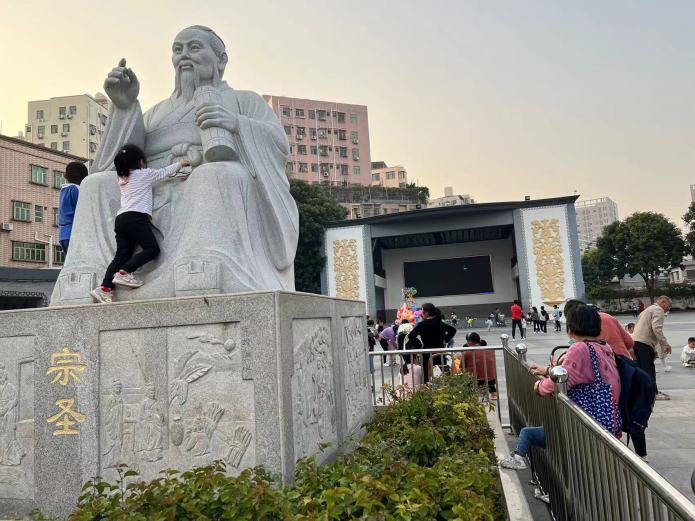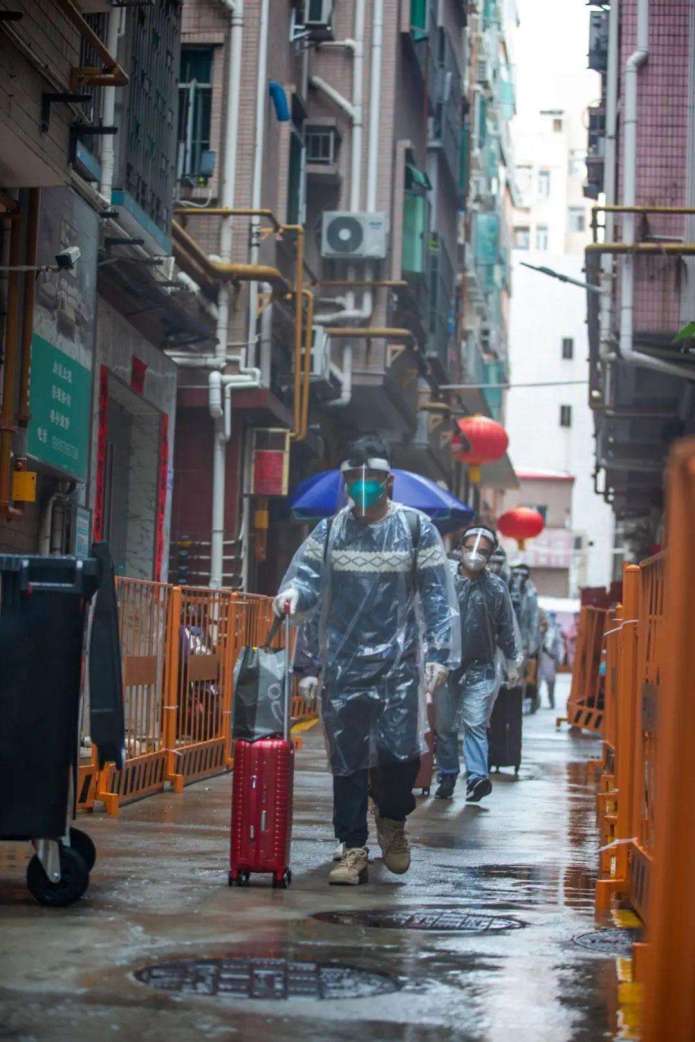These past few days we’ve been “eating melons,”–the colloquial expression for watching other people’s drama. This time, its an internecine melodrama starring the Shuiwei and Huanggang Zhuangs.


These past few days we’ve been “eating melons,”–the colloquial expression for watching other people’s drama. This time, its an internecine melodrama starring the Shuiwei and Huanggang Zhuangs.

So the Nantou venue of the 2023 UABB finally opened on August 16. Rumor has it that the reconstruction of several handshakes was delayed. And delayed. And delayed. But. The results hover at the edge of critique, where showing is itself already taking a position, especially as what we can show and how it can be shown have been increasingly restricted. What I came away with was a sense of how windows function in tight, crowded spaces. We catch glimpses of our neighbors and strangers on their way, peeping across (necessary?) divides. Impressions of a walk through official biennale and adjacent spaces, below:

Yesterday, I walked Huangbeiling, which is located on the eastern section of Shennan Road. Before the construction of the subway system, Huangbeiling felt like the end of the accessible SEZ; there was more beyond, but getting there required a car or plans for a day trip. Today, Huangbeiling is a major transportation transit hub, linking the downtown area to the eastern coast.

Huangbeiling still feels like a golden era urban village, albeit recovering from Covid shutdowns. The layout of the village is against and up the Wutong Mountain Range, with enough nooks and crannies for unexpected encounters: a household temple to Guanyin, a mountain park with feral cats hanging out in tree branches, and good, relatively cheap food.
Sixteen years ago, one of the earliest Fat Bird guerrilla performances was held at the Huangbeiling pet market. Dogs and cats were just becoming fixtures–like cars and branded items–of the middle class Shenzhen lifestyle. Fat Bird “rented” a large dog cage for about five minutes before security guards and village leaders appeared and asked us to leave In the video of the post-performance interview you can also glimpse what this section of Shennan Road used to be like. After the performers were asked to leave, we jumped on a bus and went across the city to Chiwan. The short performance gives a sense of both the transformation of the area, as well as the relative openness of the city at the time compared to the present moment.

Shenzhen has more art-adjacent villages than one might think. There’s Dafen, Aohu, Wutongshan, and Shangwei (上围). There’s also Baoyuan, which is not an art village per se but located next to the F518 space. So. You decide. 4? 5? Do we also include any of the villages that have veered into creative industries? Guimiao, the village next to Shenzhen University and now crumbling to the excavators of progress, for example, was once home to artists and bibliophiles. Anyway. Shangwei.
Continue reading
One of the driving forces behind cultural preservation Xinqiao (新桥) and neighboring Yulv (玉律) is the 新桥曾氏仕贵公理事会, which for the moment I’m translating as the Xinqiao Zeng Surname Council, rather than Zeng Family or Zeng Clan. The reason I’m opting for literal translation of 氏 is that during the times that I have visited Xinqiao and now Yulv, the emphasis has been on the family connection, rather than on explicit kin connections.
Continue reading
Yes, this is another happy collaboration with Jonathan Bach. Chapter from Neue Städte: Vom Project Der Moderne Our Authentisierung, ed. by Andreas Ludwig.

I think about this question, a lot. Because there are two ways of being public: providing public services and allowing for critical public spaces. Sometimes, when my mind drifts into thoughts about chimerica, I wonder if the US has critical public spaces because it refuses basic public services to many of its people, while China lacks robust critical spaces because its so busy trying to secure public services for its residents, urban and rural. Priorities, right? Anyway, thoughts below (full citation: The Emerging Public Realm of the Greater Bay Area, Miodrag Mitrašinović and Timothy Jachna, eds., Routledge, 2021, chapter 7.):

Long ago, when Handshake 302 was in Baishizhou and Baishizhou was the city’s most icon urban village, we ran a residency program. The first iteration of the residency was “Village Hack.” Several years ago, I reflected on the program and what it taught us about how Shenzheners were formed (paper can be downloaded, below).
Continue reading
Shenzhen’s zero-Covid management system has been integrated into online maps of the city. Searching for “Shangsha Village” on my Gaode Map app (高德地图). On the map, three classes of lockdown have been clearly marked in a modified traffic light system. Red is for Locked down, no entry no exit (封 不进不出); Orange is for Control, only entries no exits (管 只进不出), and; Yellow is for Prevention a corona test is necessary for entries and exits (出入需核算).
Continue reading
If you’ve been following the 2022 omicron outbreak in Shenzhen, then you’re aware that Tangyan Village, Shangsha (上沙塘宴村) has been one of the city’s hotspots, continuously generating positive test results. Indeed, since human factors in transmission have been controlled, the next hypothesis is environmental factors. Consequently, on March 17, 2022, the Futian Command Center (福田区新型冠状病毒肺炎疫情防控指挥部) notified residents of designated buildings in Tangyan that they would be relocated for 14 days quarantine and observation (notification #84 第84通告). While residents are quarantined, their building, its water mains and the surrounding area will be disinfected.
Continue reading